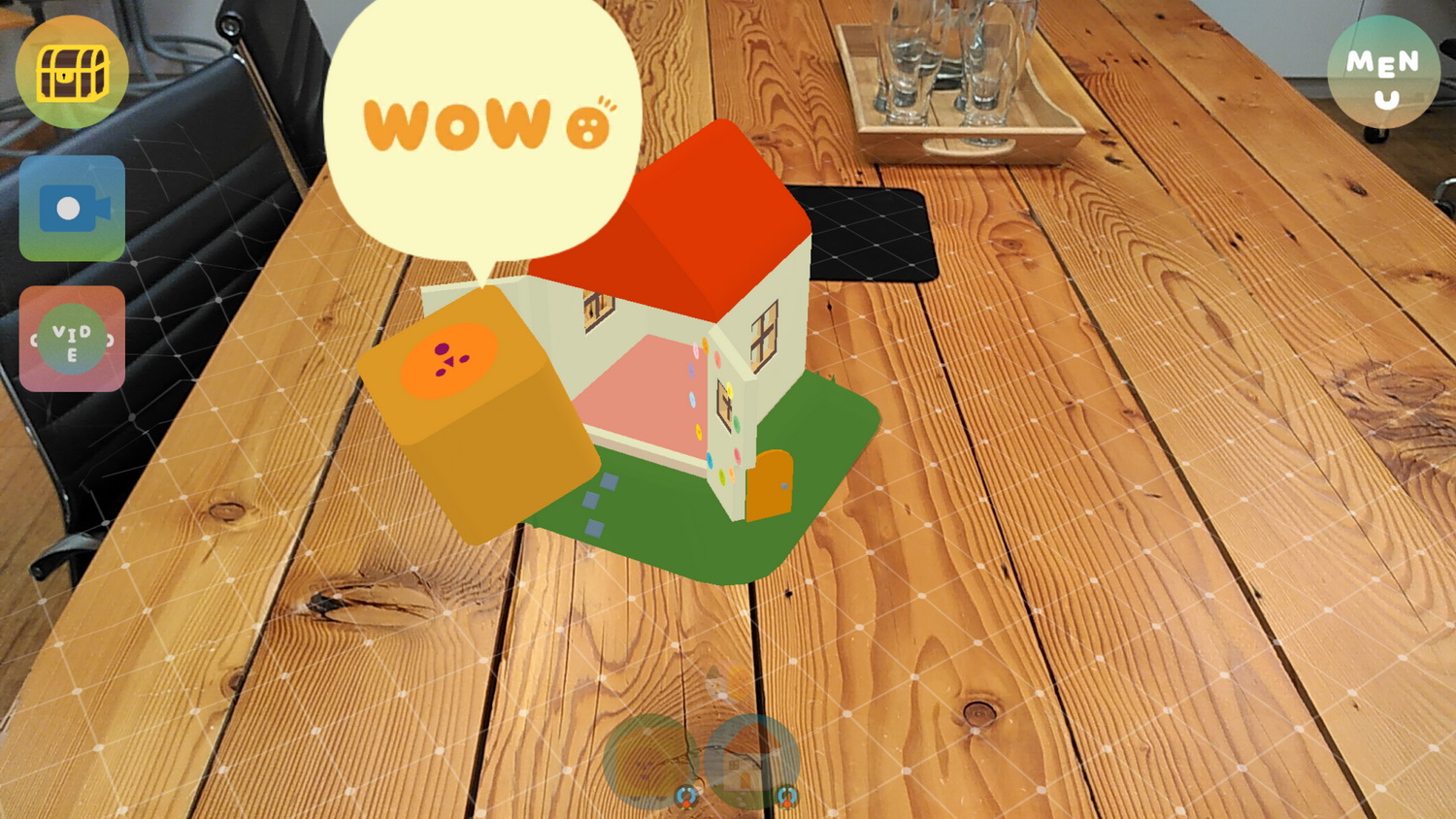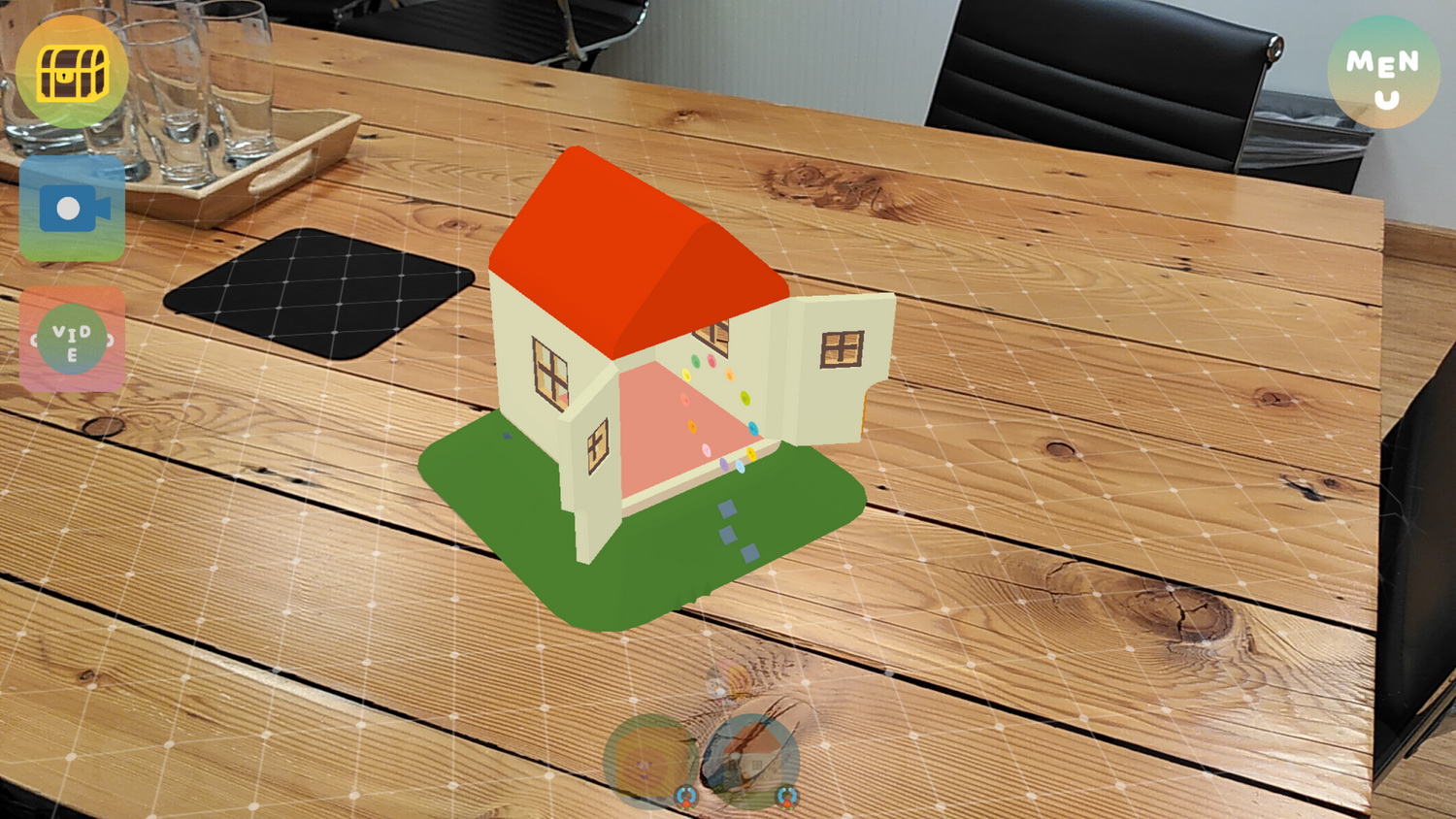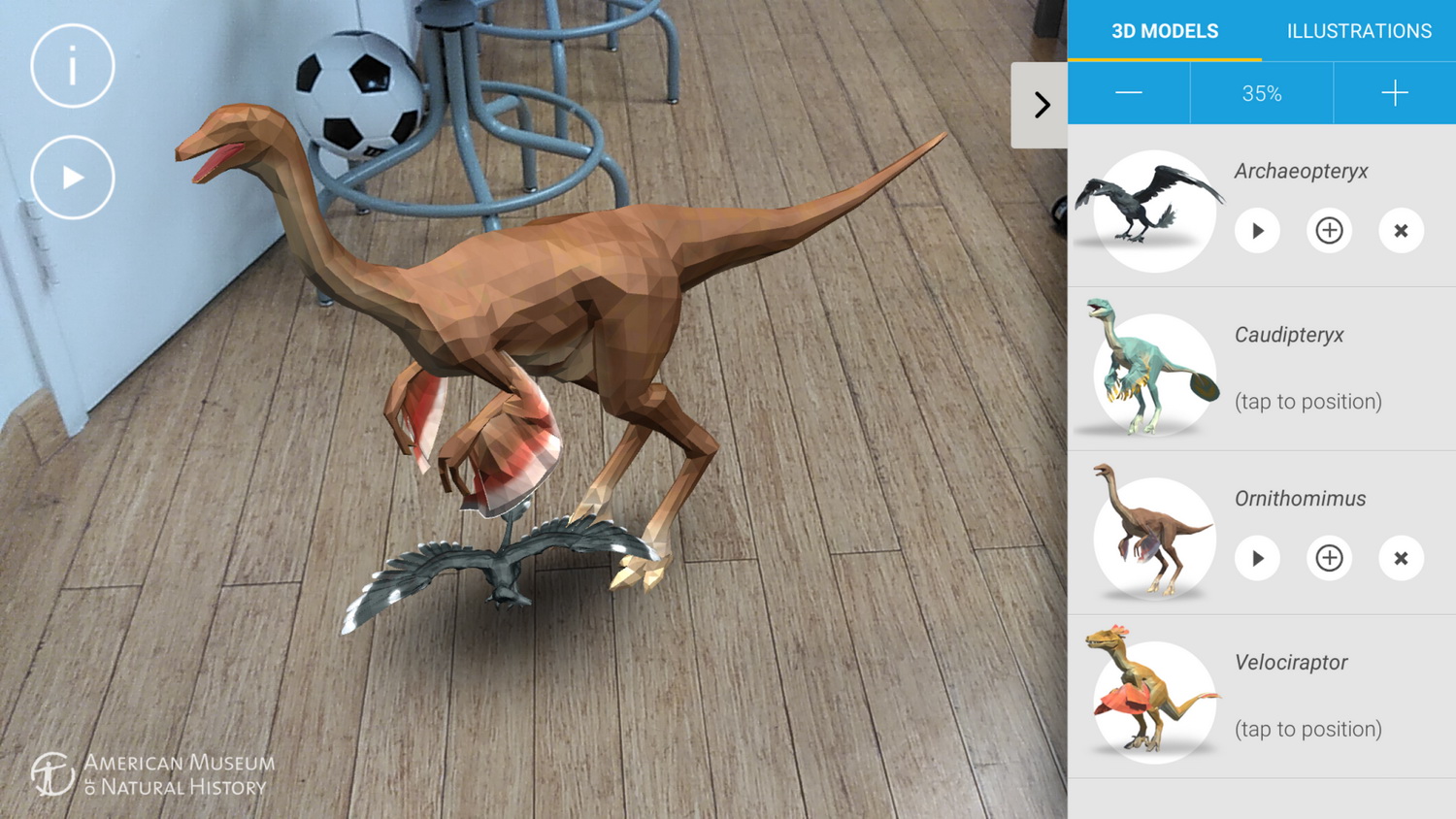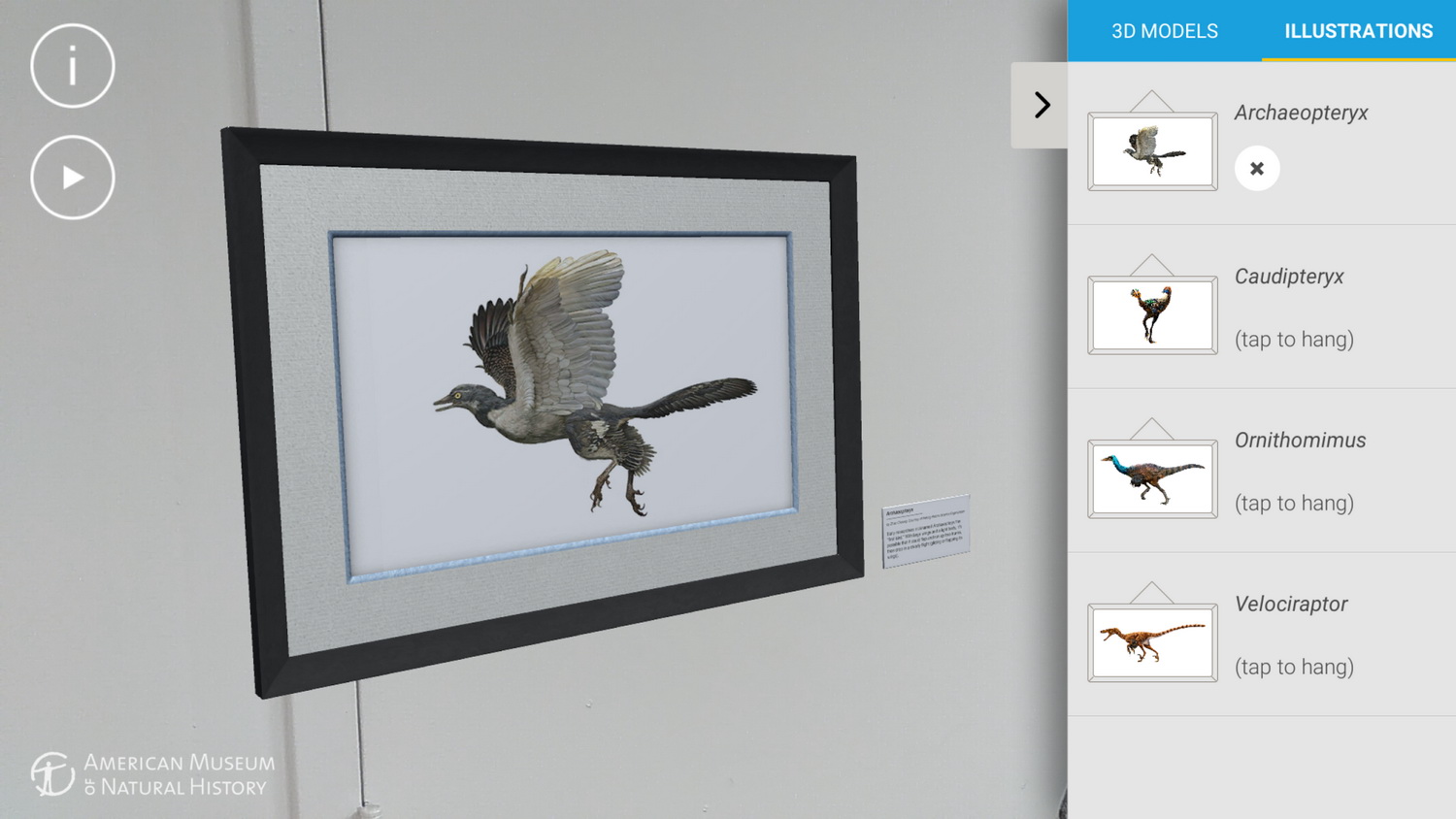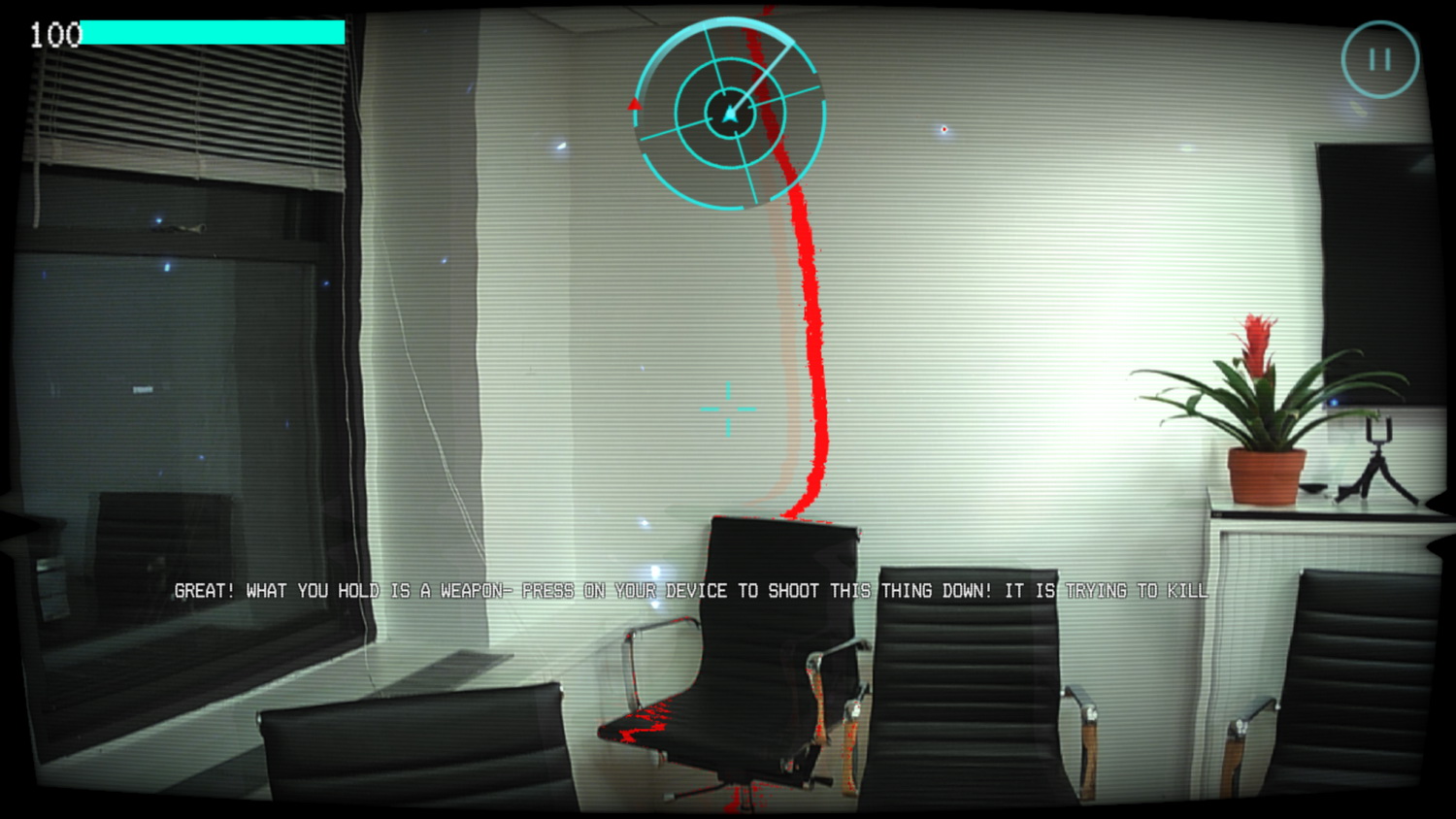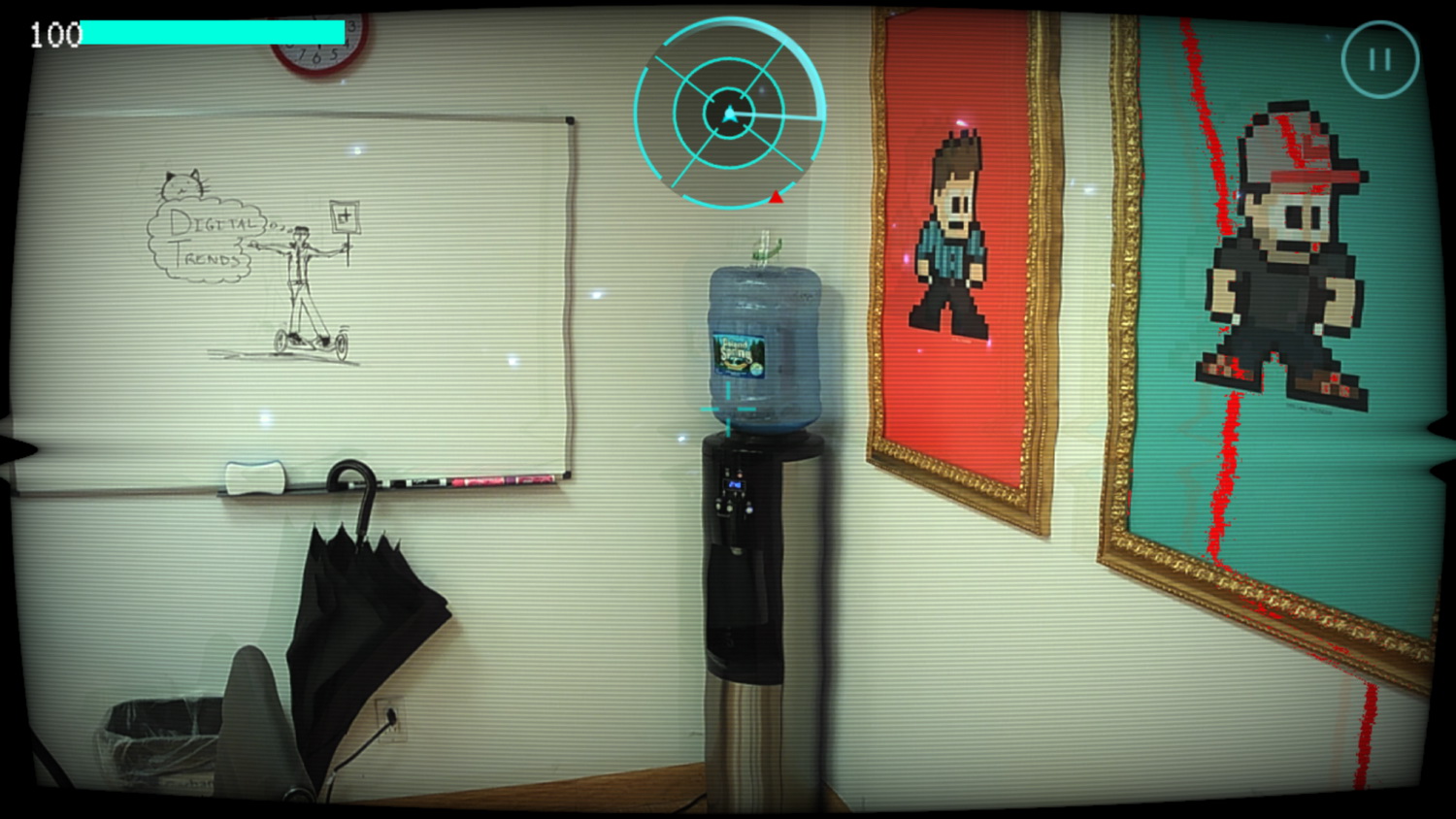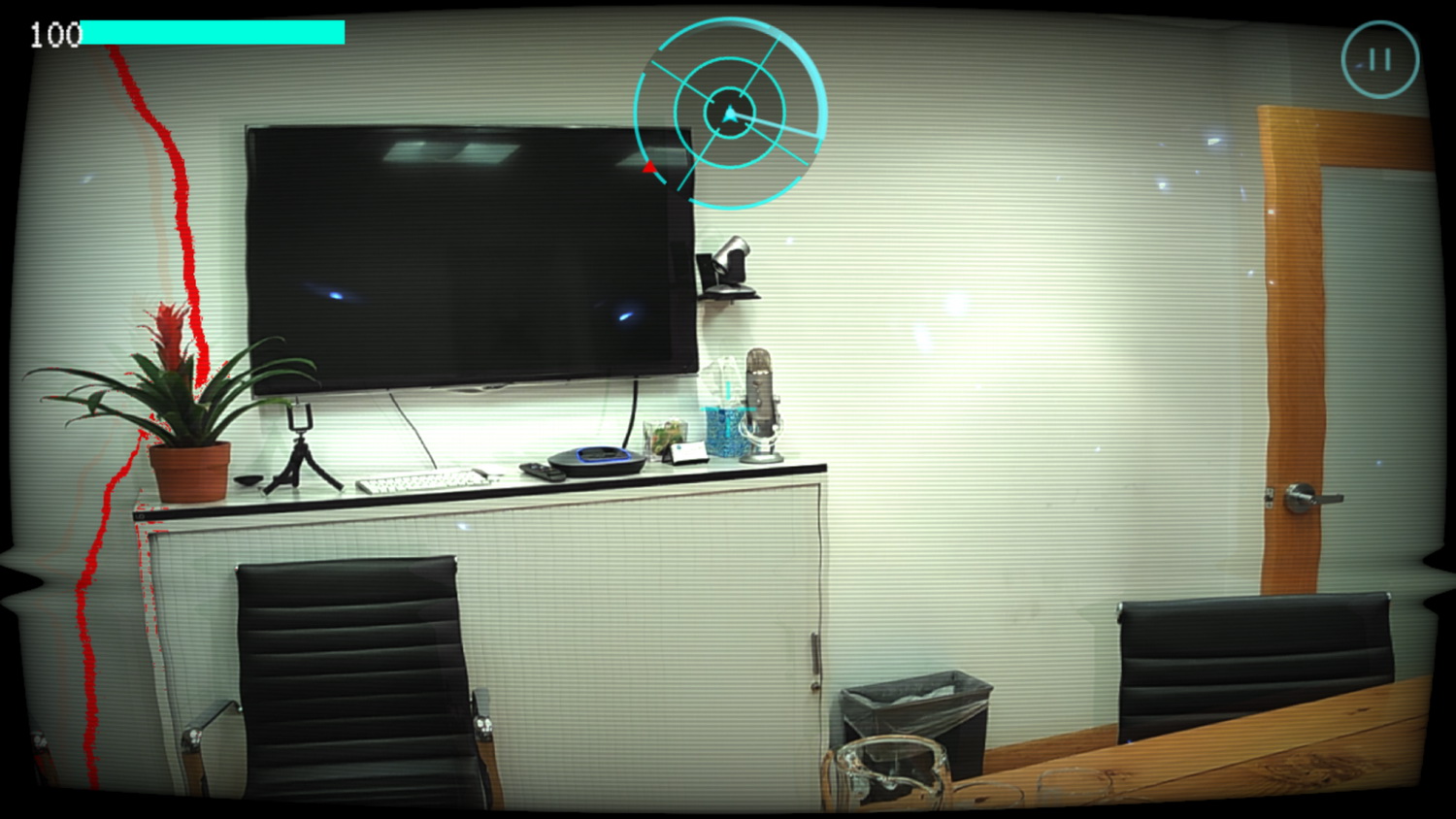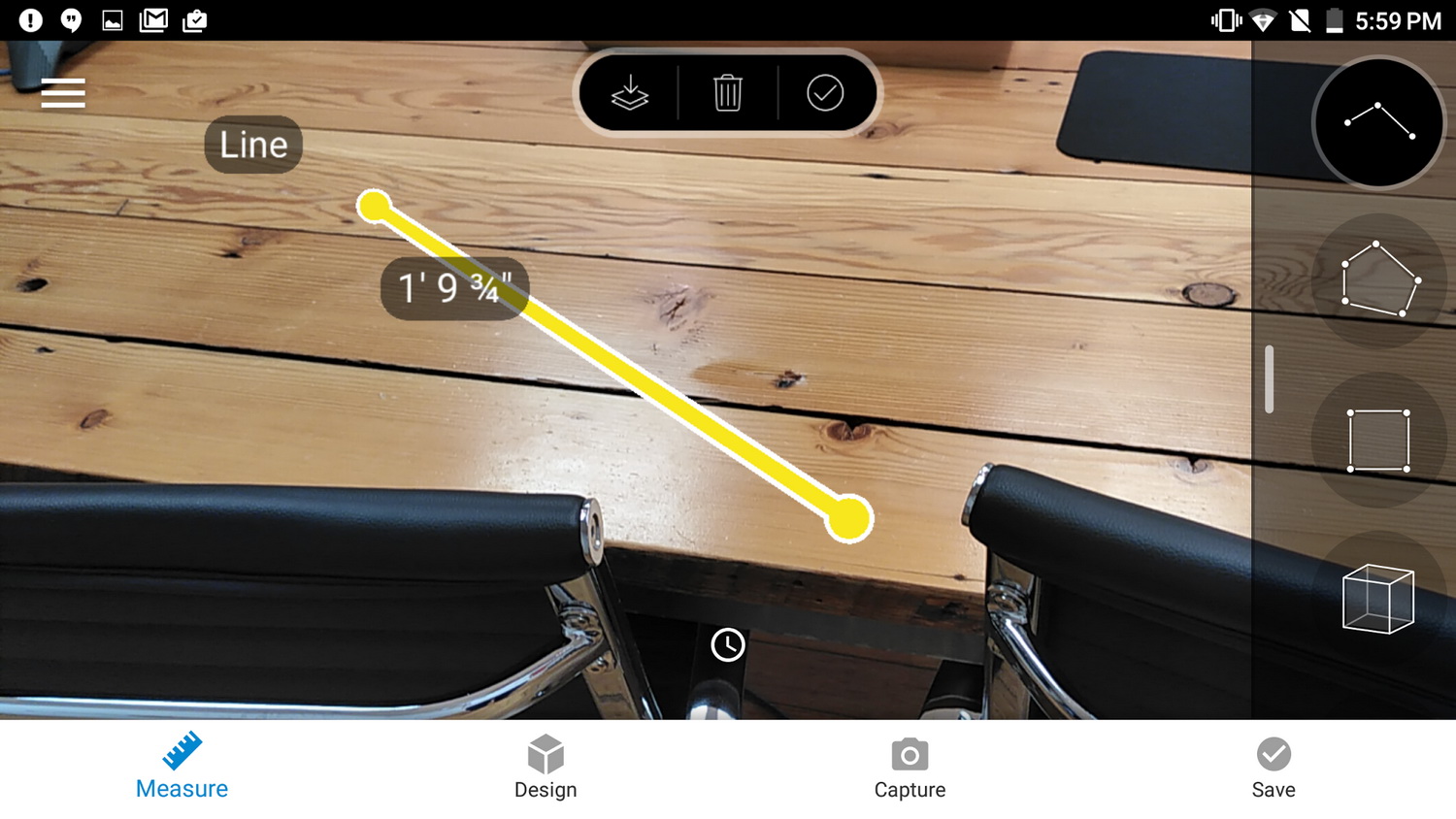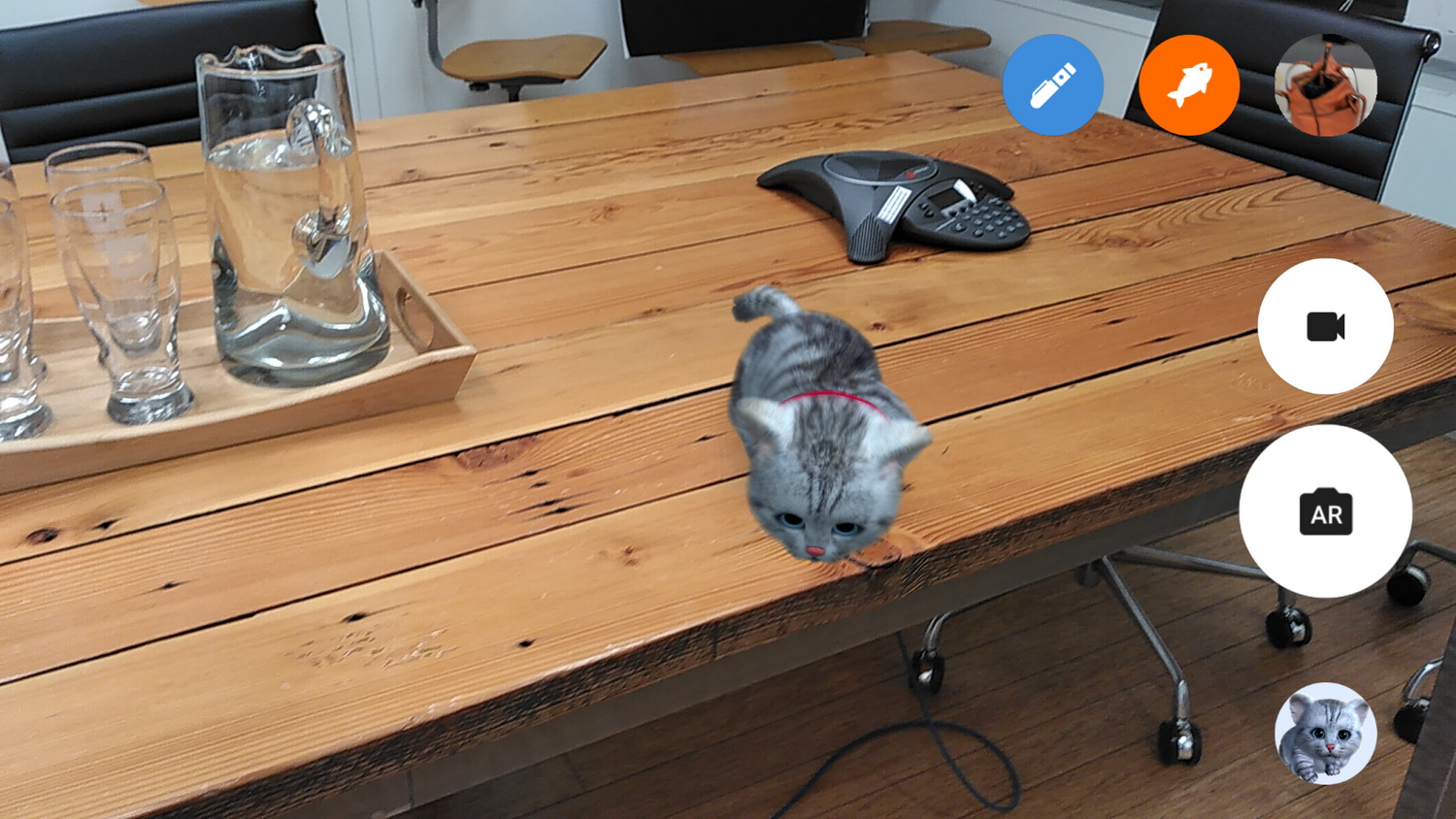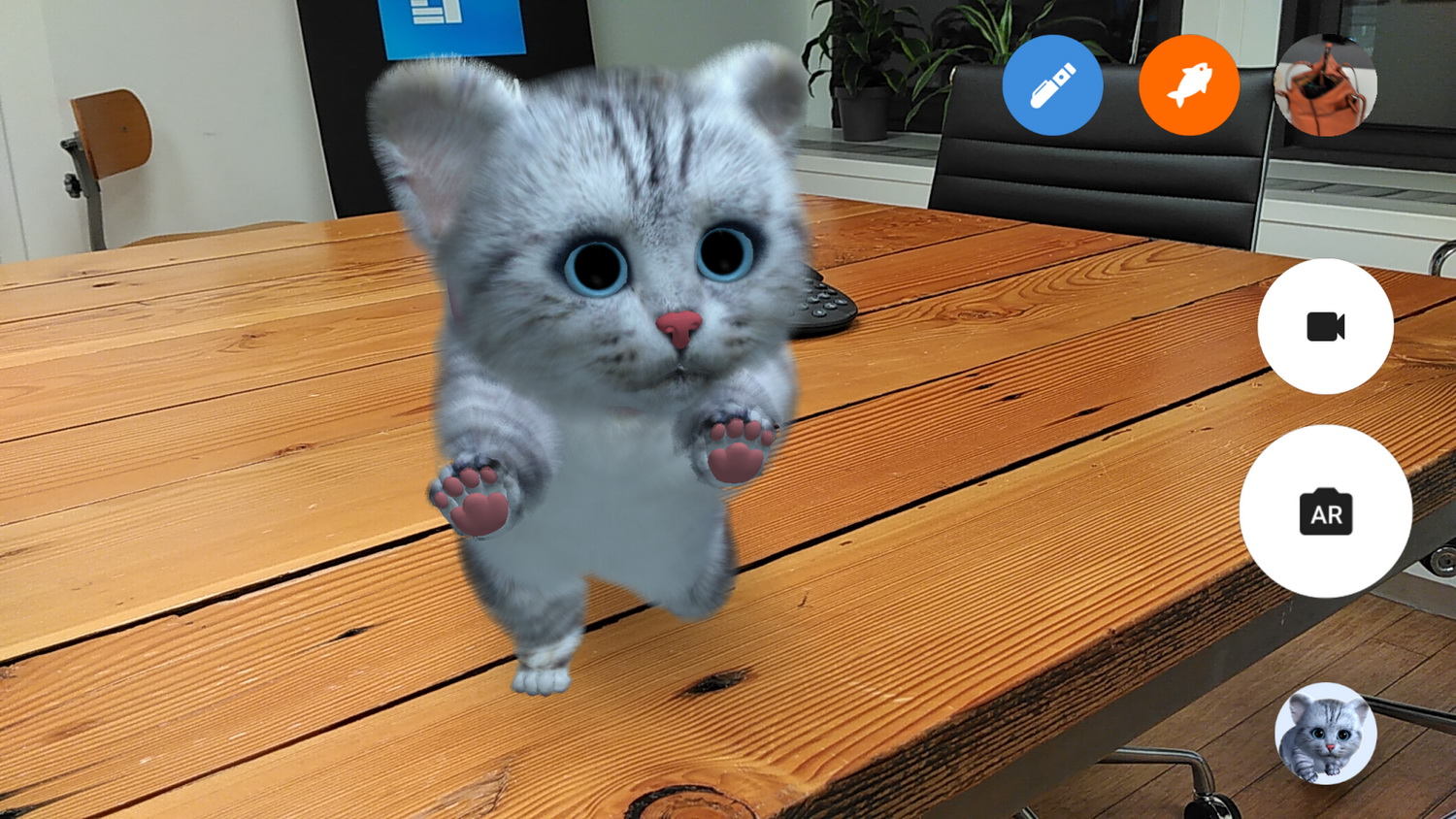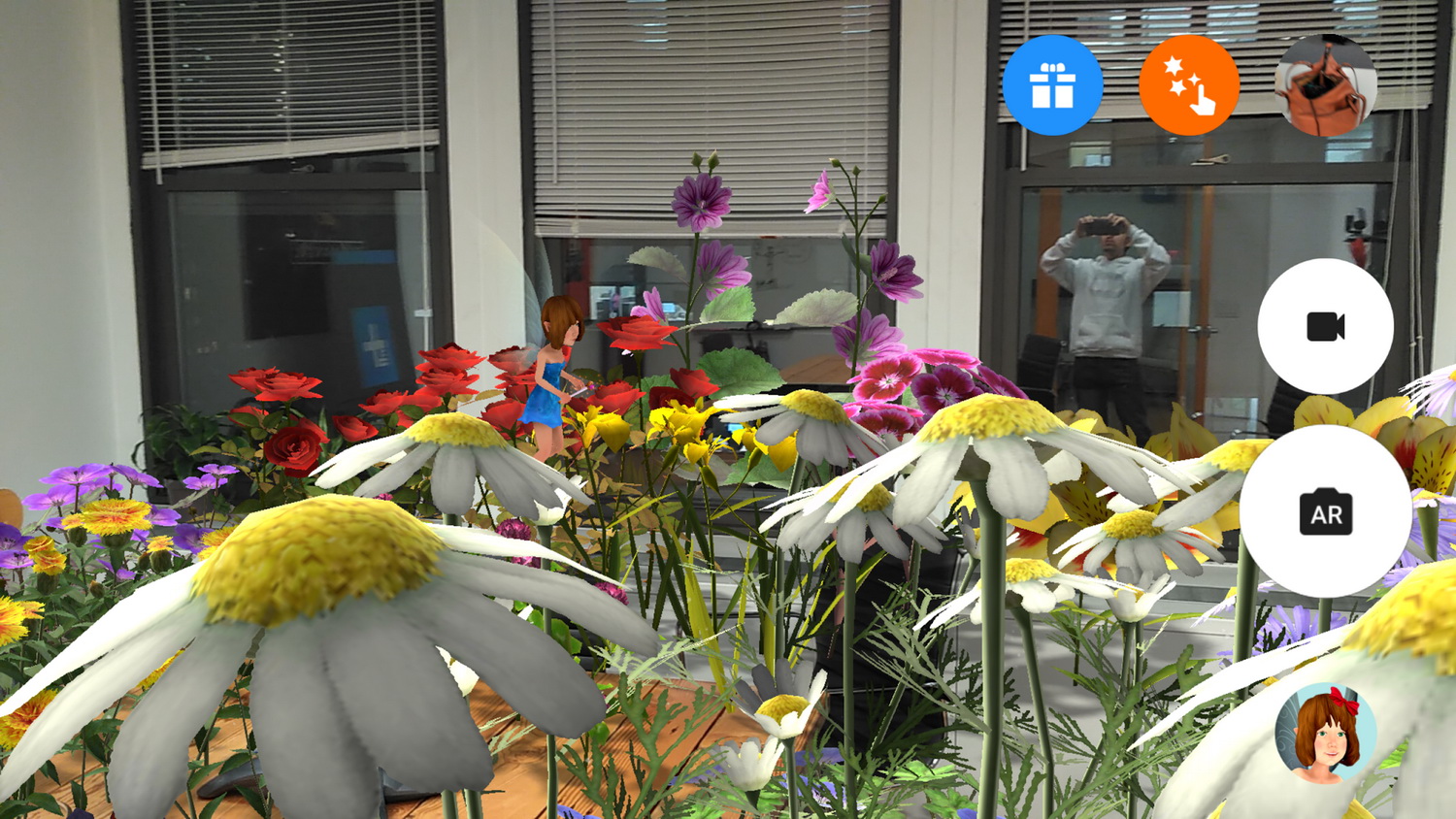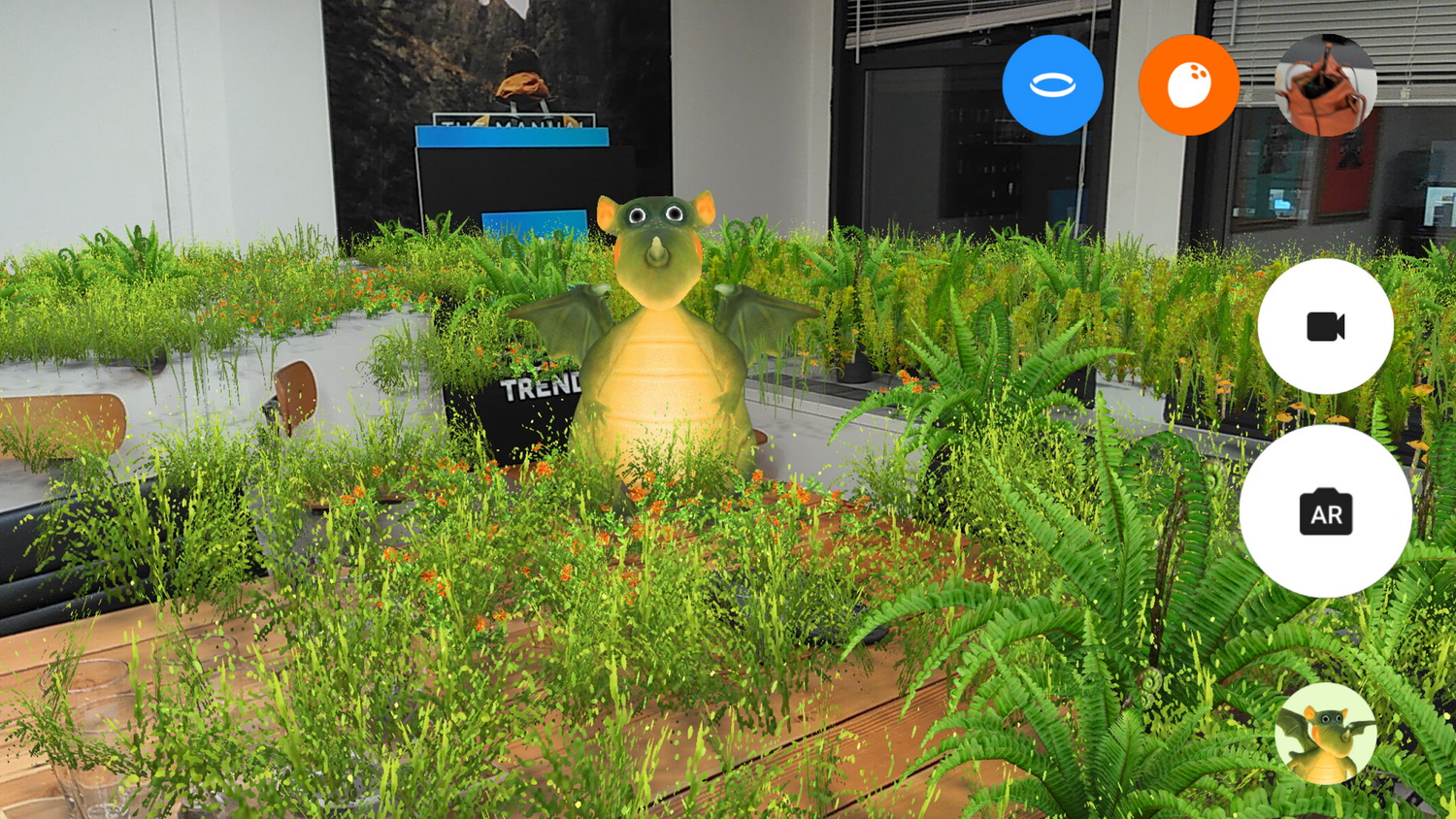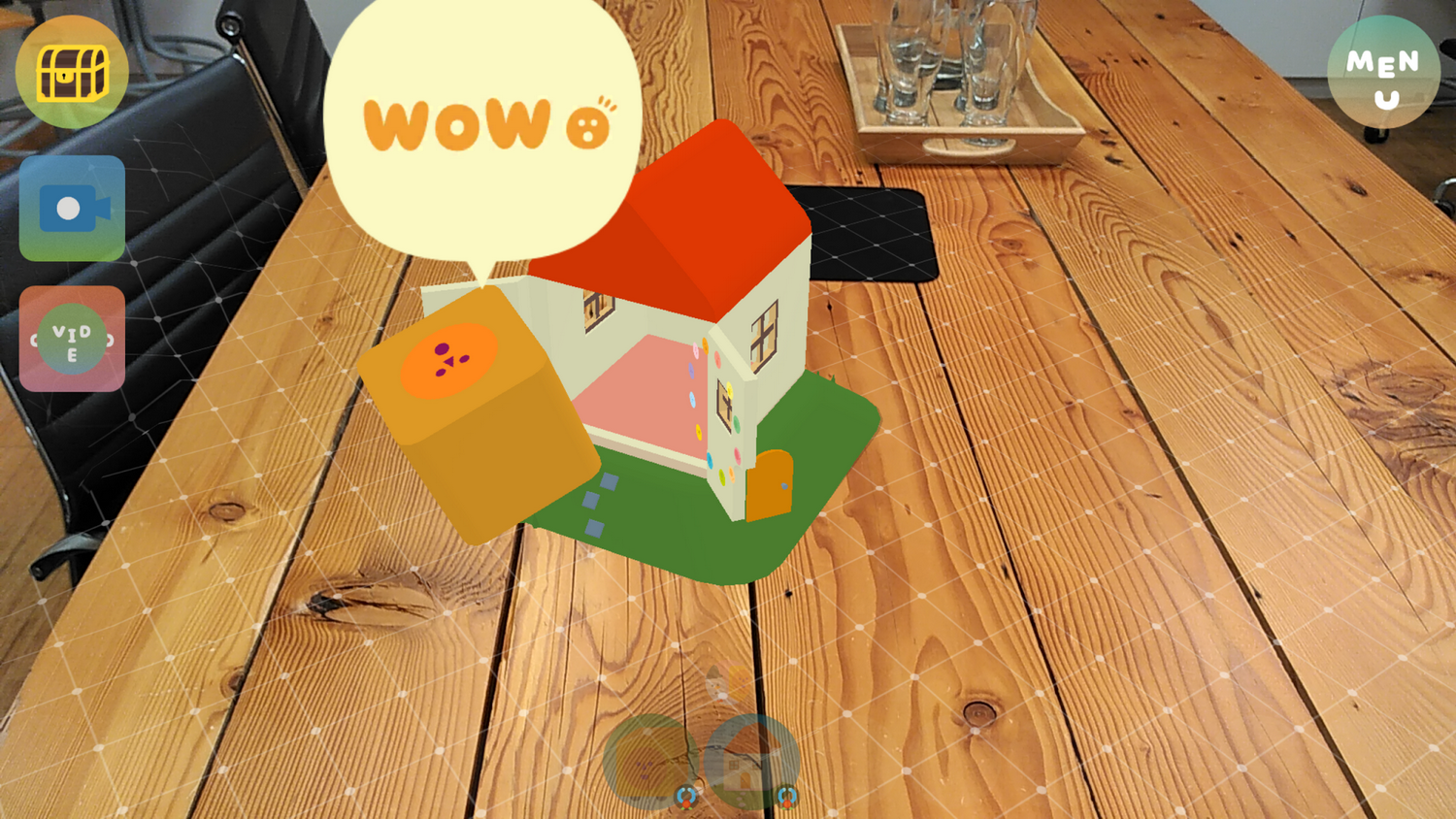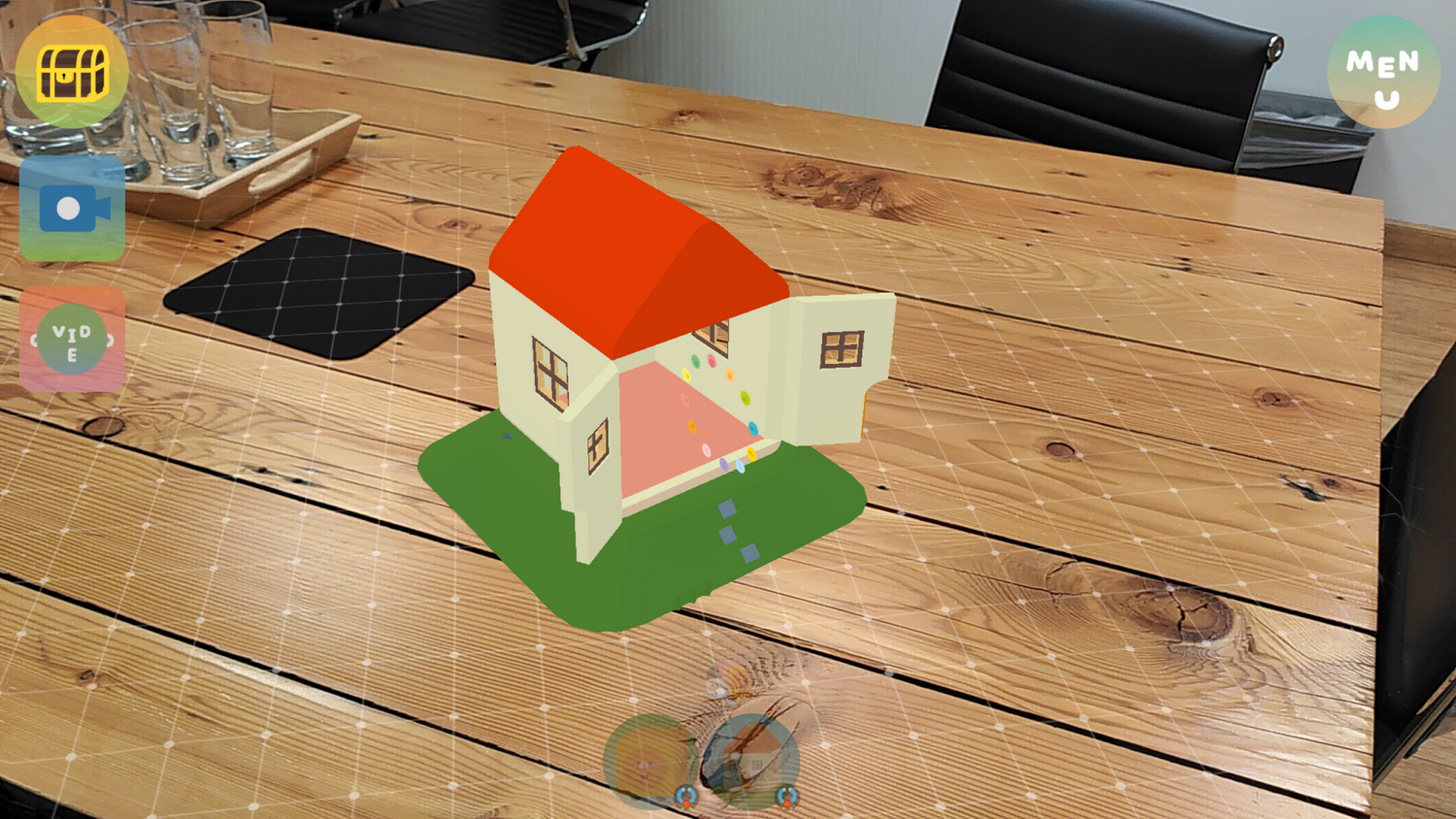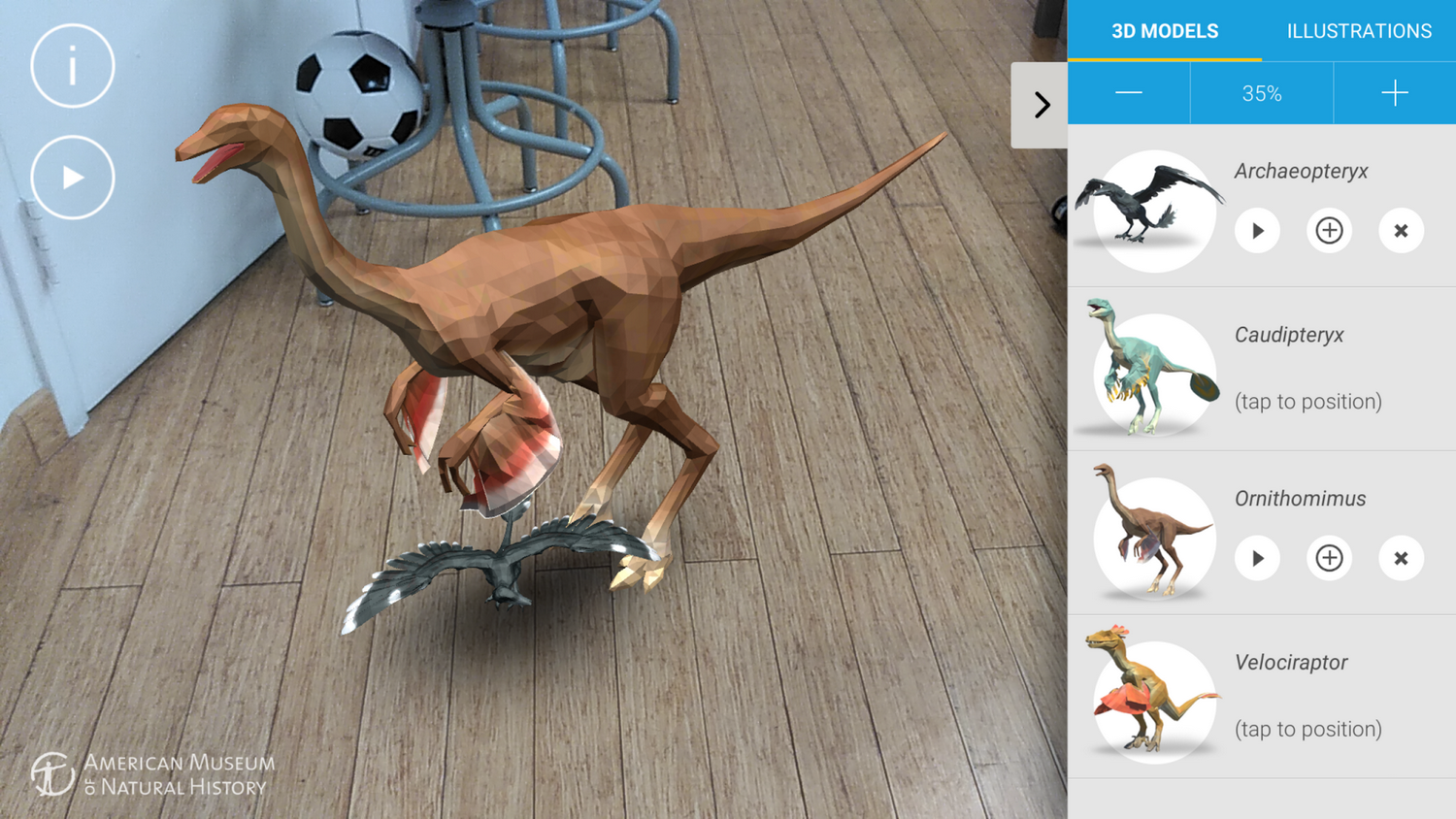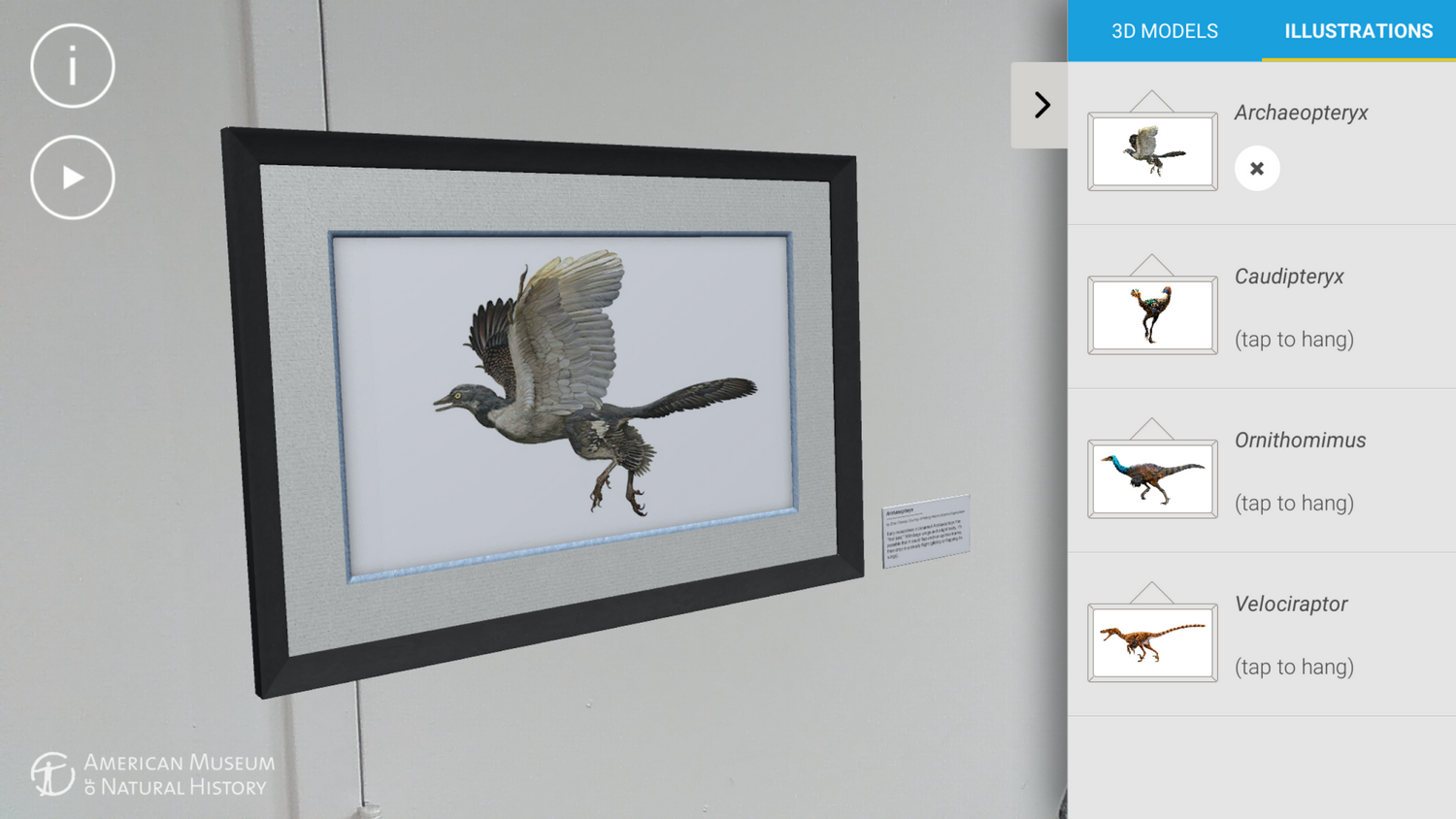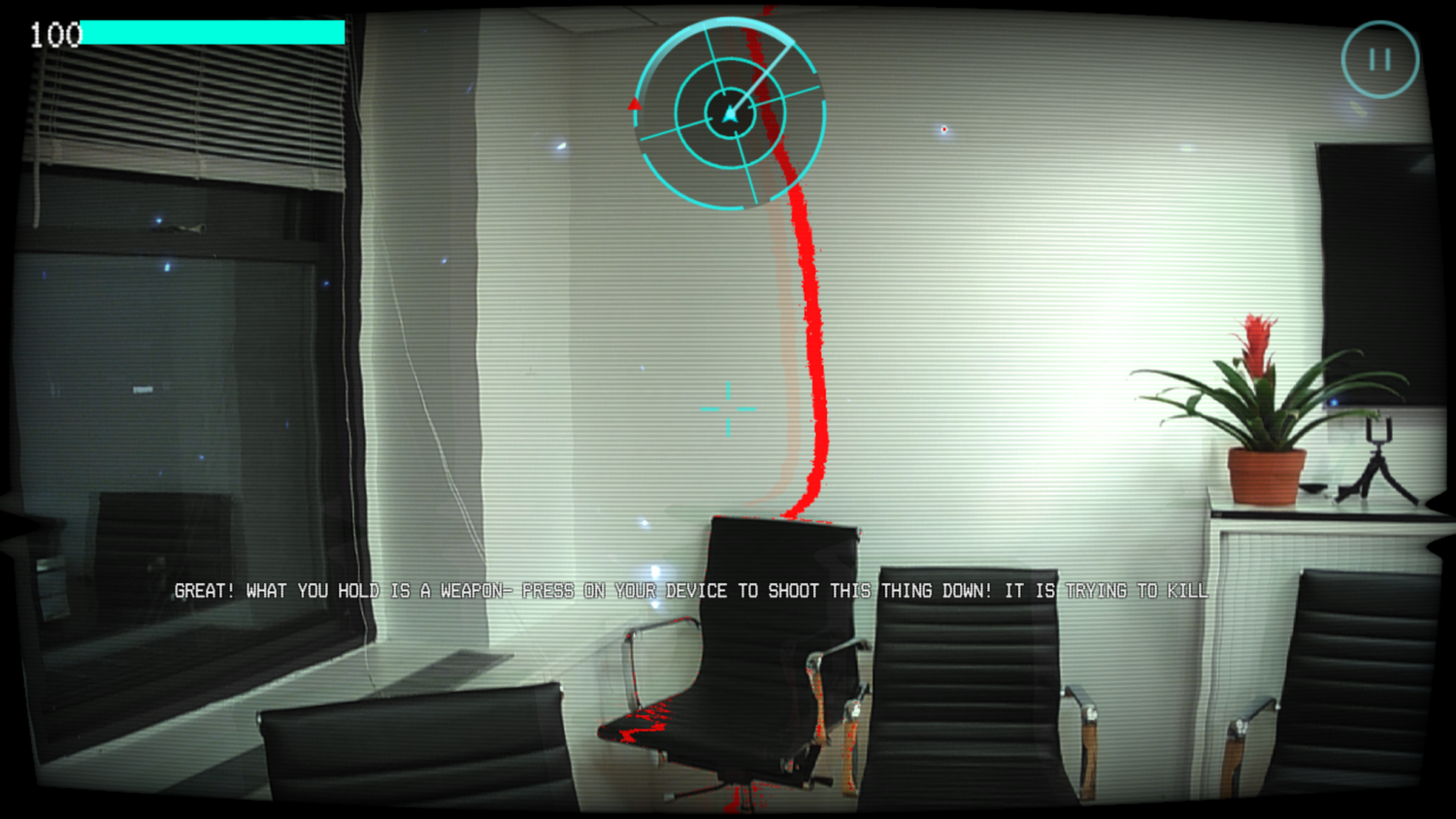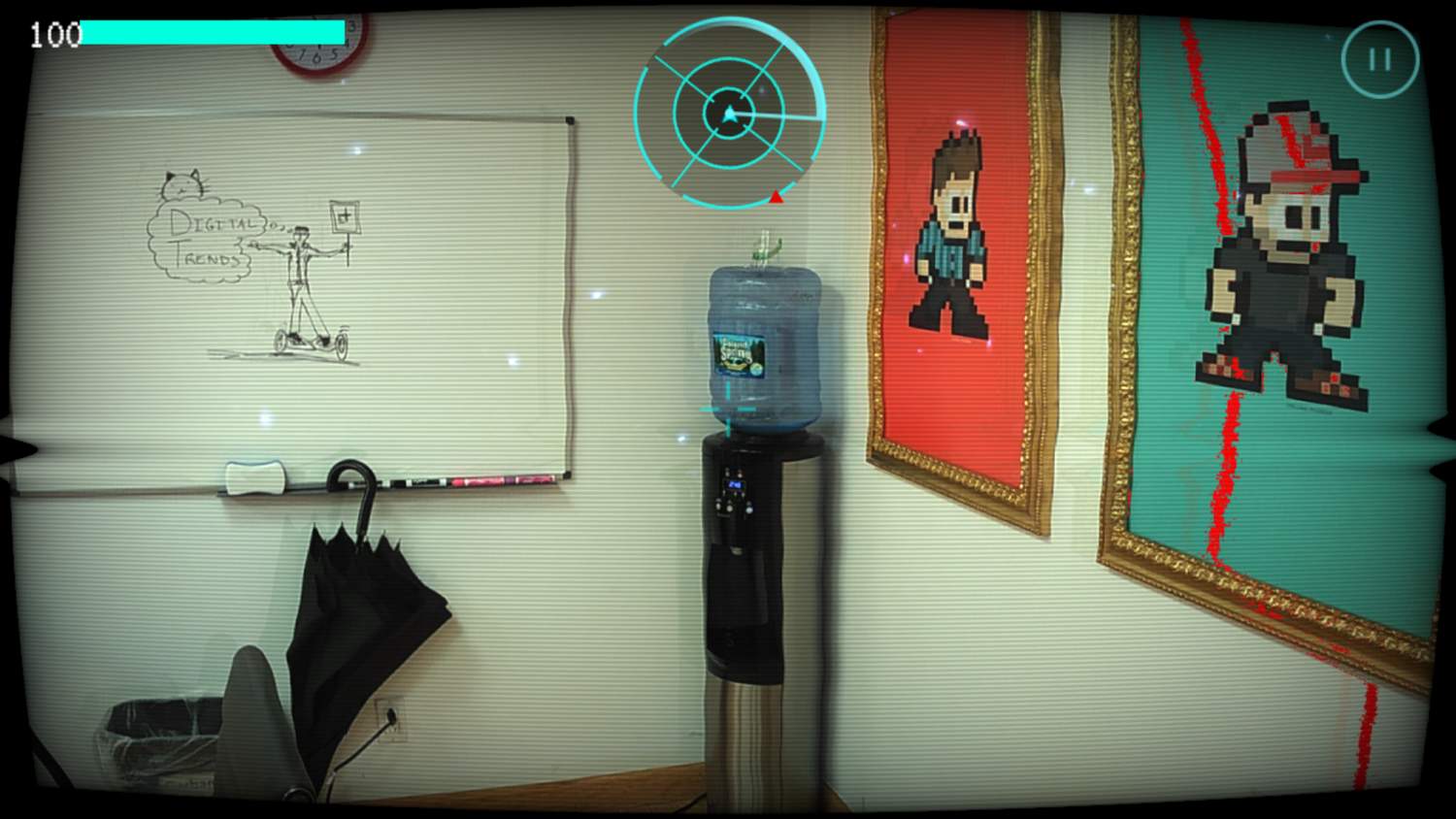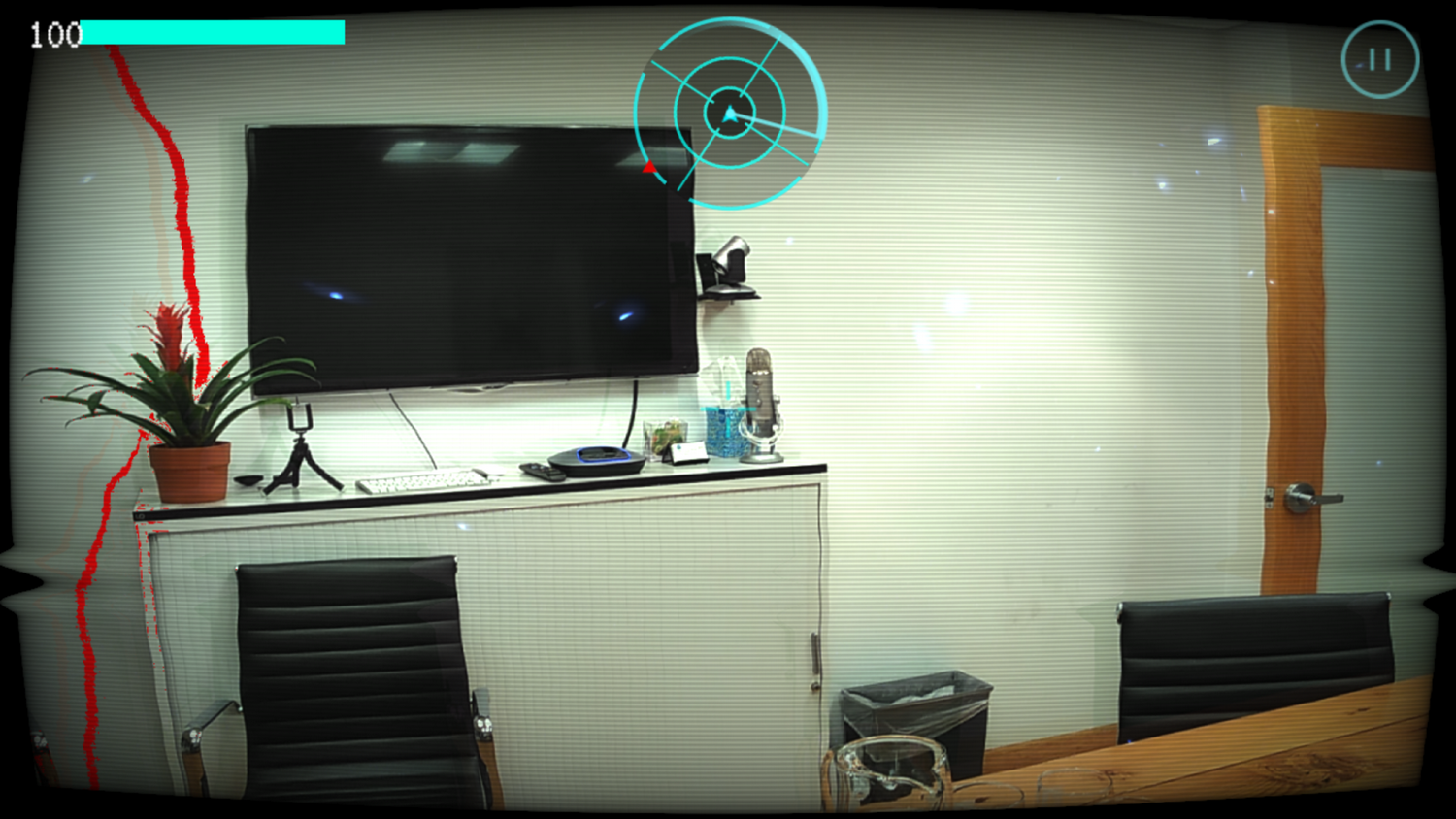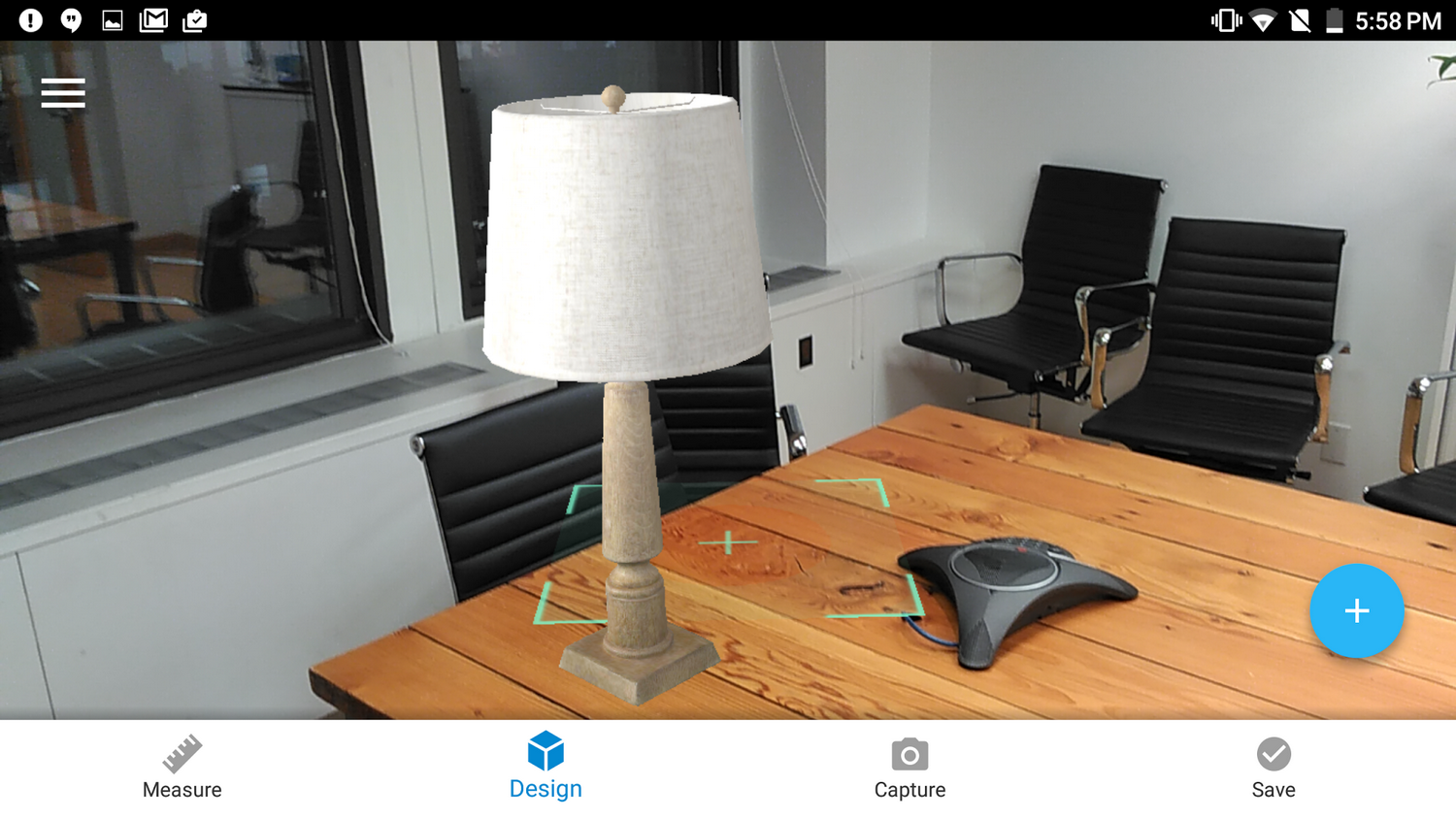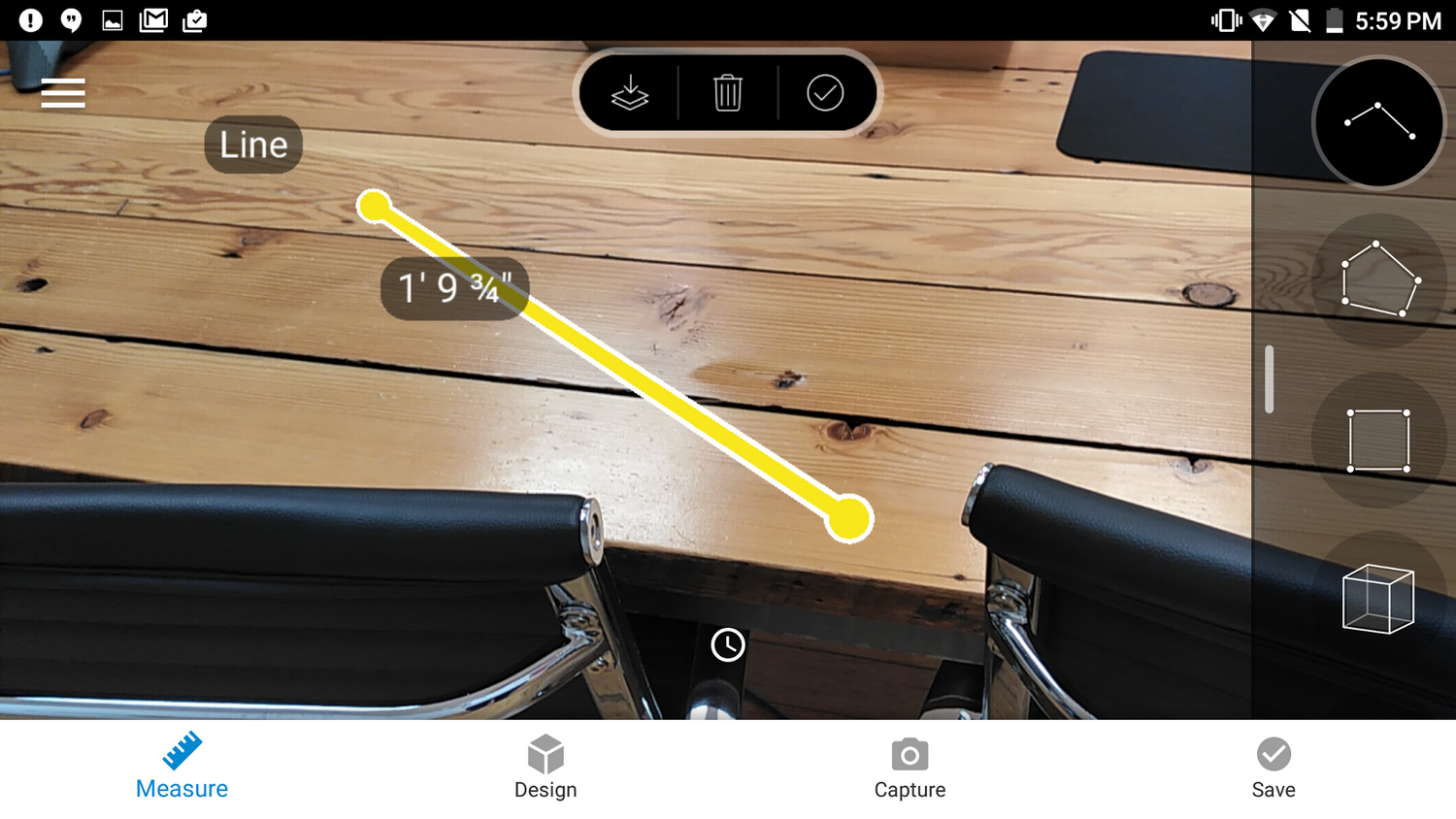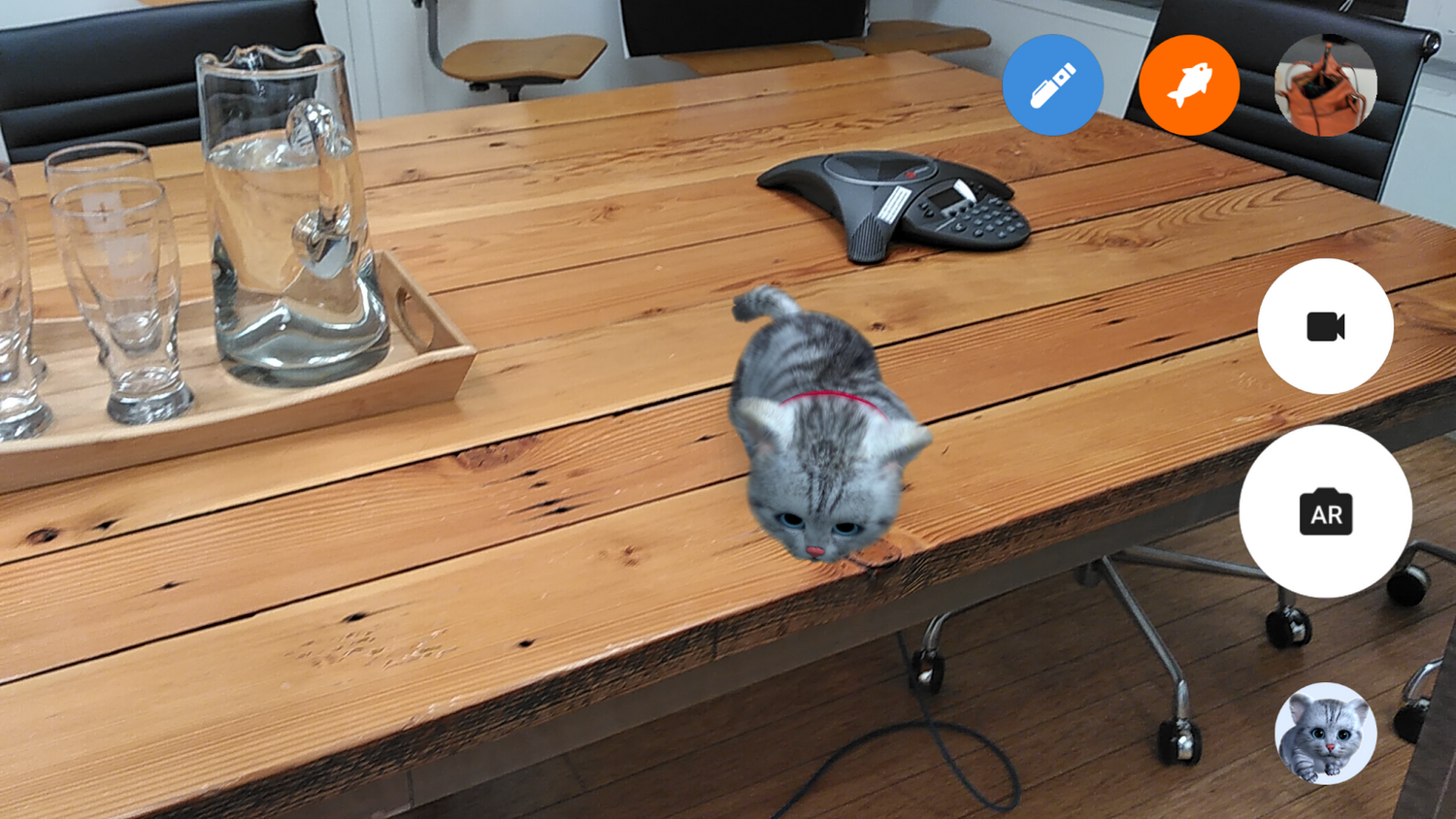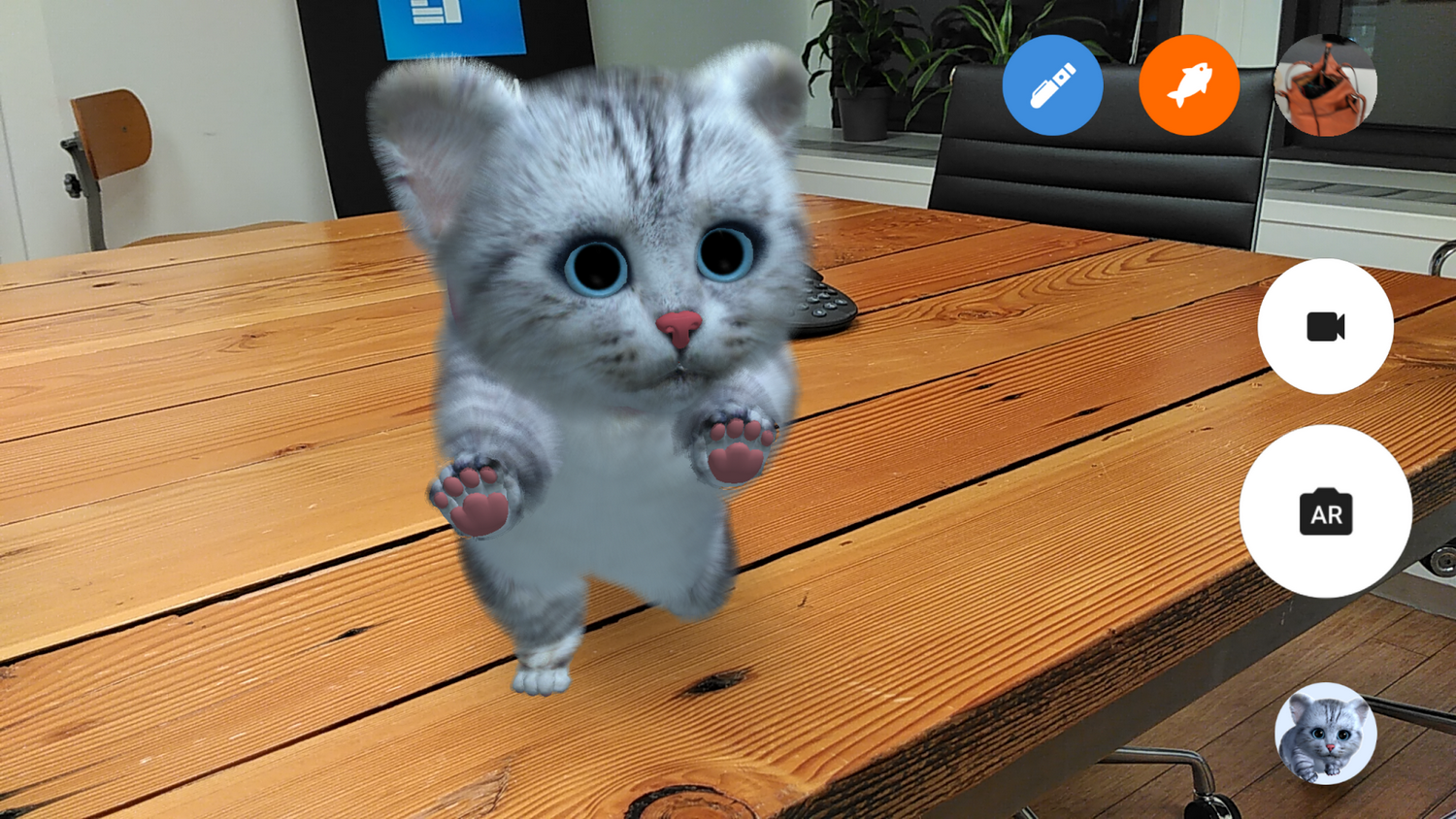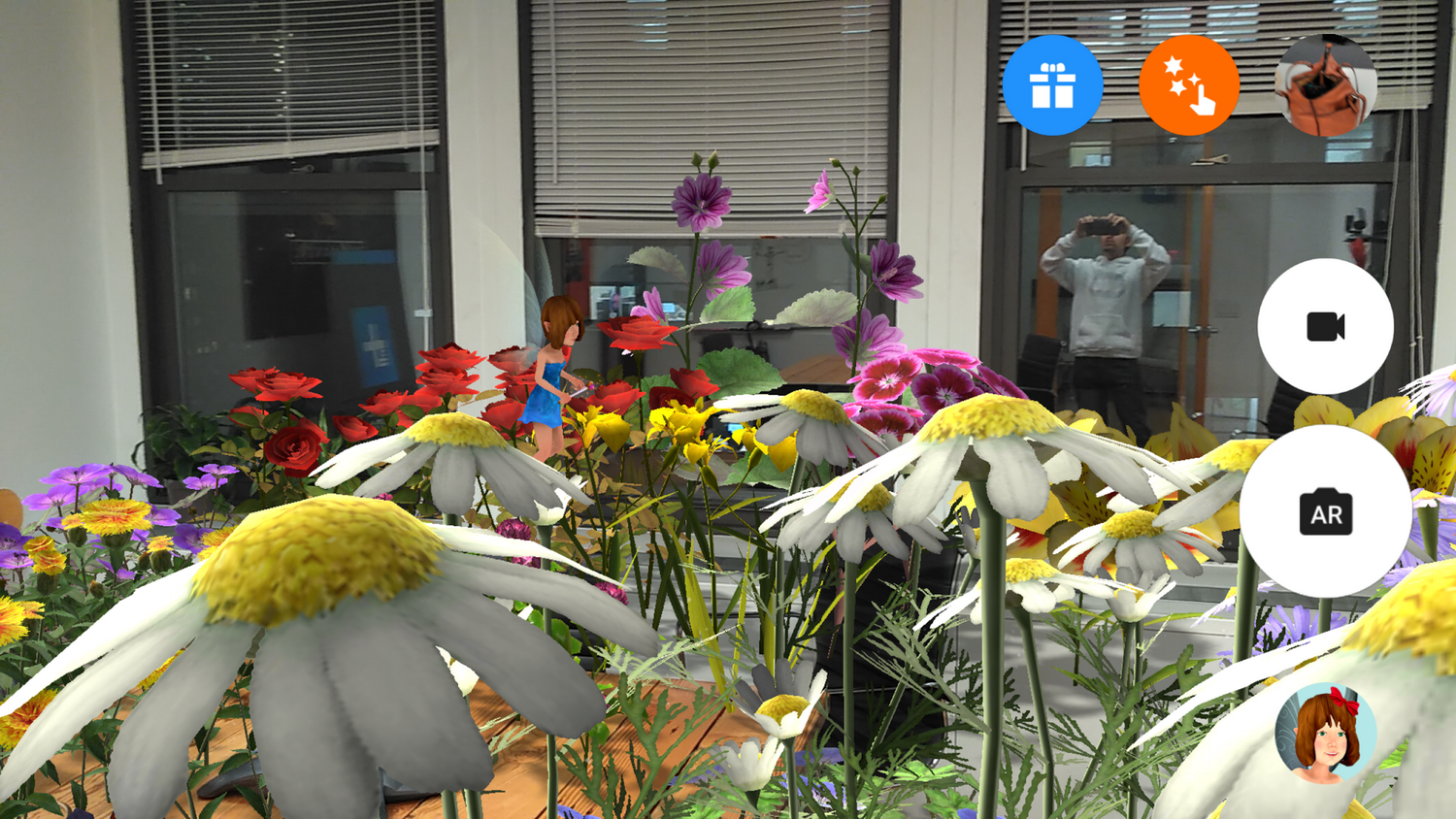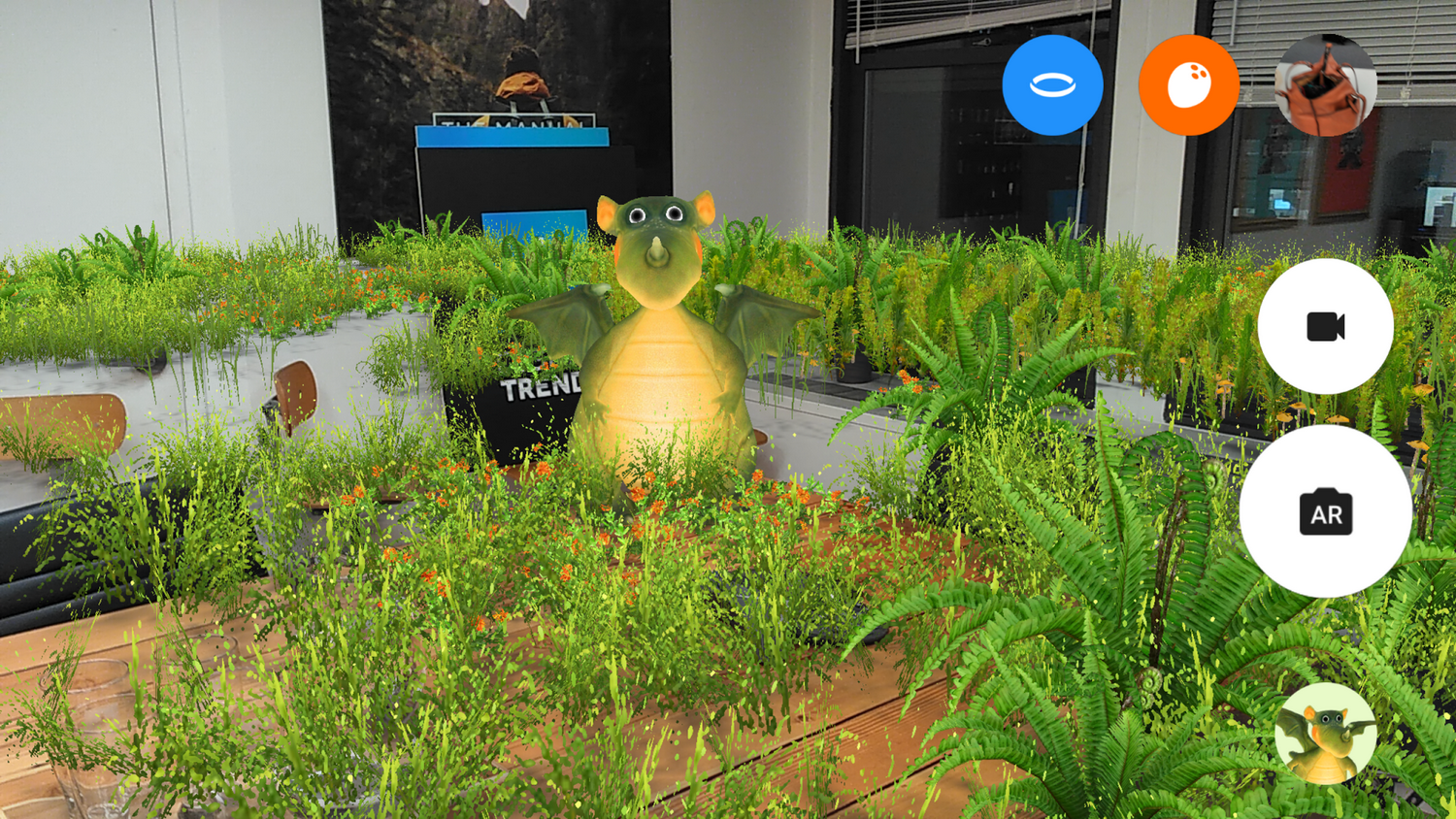“Lenovo’s Phab 2 Pro delivers Google Tango, but it’s a buggy, bulky experience.”
- Impressive Tango apps
- Unobtrusive software
- Poor camera
- Average display
- Google Tango has tracking problems
Lenovo’s pledge to develop a consumer phone with Google’s depth-sensing Project Tango platform came as a surprise. The electronics behemoth, which makes most of its money from PCs and computer monitors, was taking something of a risk — prior to the announcement, a Project Tango smartphone had yet to hit store shelves.
But Lenovo’s confidence in Tango’s promise spurred it forward. “Together with Google, we’re breaking down silos by working across mobile hardware and software,” Chen Xudong, the senior vice president of Lenovo’s mobile group, said at the partnership’s unveiling. “Turning our shared vision into reality will create a more holistic product experience that captures the imagination of today’s consumer.”
The company’s collaboration materialized in the Phab 2 Pro, a $500 smartphone with built-in Project Tango sensors that can track objects in three-dimensional space. It reacts to your body’s movements, recognizes objects like tables, chairs, walls, and windows, and captures the dimensions of a room. And unlike other
But no new technology is perfect, and the Phab 2 Pro is a frustrating example.
Tango is awesome, when it works
Project Tango is supposed to revolutionize motion and position tracking on phones by mapping out your environment like never before. It’s been in development at Google since 2014 when Johnny Lee, a computer scientist and core contributor to Microsoft’s Kinect platform, led a team within to develop a location-tracking solution that worked without the aid of GPS, lasers, proximity sensors, and other “external signals.”
Tango is about motion-tracking, area learning, and depth perception.
The motion-tracking component notes the distinguishing characteristics of objects in Tango device’s environment, like the particular angle of a floor and a chair’s orientation relative to a table. In the Phab 2 Pro’s case, it’s accomplished with a wide angle fisheye lens, an accelerometer, and a gyroscope: visuals from the fisheye camera identify the corners of objects, tracking how they move between frames to calculate the distance traveled, the speed at which it’s traveled, and the direction it’s turning.
Tango’s area learning involves the storage of environmental “maps” enhanced with metadata like points of interest. Specifically, the Phab 2 Pro records certain features and “recalls” them later, aligning them with real-time data to improve the accuracy of motion tracking.
Depth perception, achieved with an IR (infrared) emitter and RGB camera, grants the Phab 2 Pro the ability to gauge the distances, sizes, and the dimensions of surfaces. The IR emitter beams infrared light, which the RGB camera then measures to generate depth data.
All those technologies together help the Phab 2 Pro create a wealth of experiences. Project Tango’s depth tracking reacts to forward, backward, and strafing motions — if you take a step forward in a Tango game, digital objects on the screen react in turn, staying in perspective as you circle or duck under them. Project Tango can identify objects in the real world, like a desk in a living room and the walls of a home office. And even more usefully, it can calculate the dimensions of those objects. Want to get a bed’s length? Tango will provide measurements in your metric of choice.
Project Tango apps
More than 35 Tango apps, games, and utilities populate the Google Play Store. Tango could use some polish, put lightly — it wasn’t an uncommon occurrence to encounter multiple crashes before, during, and after launching a Tango app or game. Sometimes Tango Core, Tango’s software service, quit working. Other times the camera disconnected, or the apps themselves failed to load.
And even when Tango’s fundamentals chugged along without complaint, they often misjudged their surroundings. Wrinkled sheets on a bed became peaks and valleys, and a dining room candelabra was rendered a virtual wall.
When Google Tango works without a hitch, the results can be breathtaking.
Woorld, from 2004 cult hit Katamari Damacy creator Keita Takahashi, is one of the most effective uses of Tango tech we’ve seen. You’re tasked with building the village of your dreams, bound only by the dimensions of your real-world environment. Woorld makes remarkable use of Tango’s environmental tracking. Houses sit securely on tables and chairs, as do the little creators that inhabit them. Woorld suffers from the same tracking problems as all other Tango apps, namely misjudging the geometry of an object and detecting barriers where none exist. That can make building a digital village a chore, but for the most part, it is far and away the most fun we’ve had with Tango.
Lowe’s Vision may not feature Woorld’s cartoon cities, but it does have an abundance of microwaves. It’s among a class of Tango applications that leverage the tech’s depth-sensing abilities for more pragmatic purposes. Extendable digital measuring sticks faithfully report the width, height, and depth of real-life objects as you drag your fingers along them. And an annotation option helps you attach useful notes to said objects for future reference.
The undisputed highlight of Lowe’s Vision is the design tool, which connects you to the retailer Lowe’s online catalog of appliances and home decor. Want to see whether or not the kitchen has enough clearance for that new microwave you’ve been eyeing? Tap and drag it in place. Want to get an idea of how that new floor rug would look in the dining room? Plop it on the real-world floor in front of you. That is, if Tango judges the distance correctly.
When Tango’s tech works, the results can be breathtaking. Sadly, it often screws up.
Hefty, but sturdy, design
The Phab 2 Pro is ostensibly a
Phab 2 Pro’s unwieldy size makes it difficult to hold. A stretch of light Google searching, tweeting, and email pursuing were all it took for our arms to feel like they were about to fall out of his sockets,” and one-handed use is out of the question. The volume rocker and power button are just within reach of a fully extended thumb, but the topmost portion of the screen isn’t. Short of shimmying up the Phab 2 Pro’s body with a dexterous hand, it’s pretty much impossible to reach anywhere on the display’s upper third, making swiping away notifications, replying to texts, and toggling alarms a chore.
That’s not to say the Phab 2 Pro isn’t pocketable or pretty. It (just barely) fits in an average pair of men’s jeans, it has a beautiful fit and finish, and the front is dominated by a bright, colorful 6.4-inch LCD display shielded beneath ever-so-slightly curved 2.5D Gorilla Glass. Underneath it sits three touch-sensitive, illuminated buttons used to navigate around the phone’s software: a home button, multitasking button, and back button. And above that is an earpiece, a multicolor LED, 8-megapixel selfie camera, and proximity sensors.
Polished chamfered edges run the length of the Phab 2 Pro’s sides, with antenna lines near the top and bottom. On the left is a SIM card slot, the headphone jack sits on the top, and on the bottom is a bifurcated speaker grill and two exposed screws.
A Micro USB port, a holdover from the Phab 2 Pro’s prototype days, sits in-between the grills and screws. That’s a shame — USB Type-C, Micro USB’s successor, is fast becoming the new standard, and it would’ve been nice to see it adopted here, if for no other reason than to have one less cable to worry about.
On the Phab 2 Pro’s rear is a fingerprint sensor. Adjacent to it is a big, round 16-megapixel rear-facing camera, a tiny microphone cutout, and a rectangular sensor array with an LED flash and Google’s proprietary Tango module (more on those later).
That’s all to say the Phab 2 Pro’s level of polish is impressive. Its brushed metal body and machined edges, available in Gunmetal Grey and Champagne Gold, glimmer in the light like jewelry. And it is sturdy as a tank — never once did we worry about bruises, damaged buttons, or screen scratches.
A decent screen
Luckily, the Phab 2 Pro’s screen is (almost) worth the sore shoulders. The 6.4-inch Quad HD (1,440 x 2,560 pixels) IPS LCD can’t measure up to the Google Pixel’s AMOLED screen, but it’s vibrant all the same. At maximum brightness — 425 nits – you can see it in direct sunlight and bright office lights. It doesn’t distort at extreme viewing angles, and the screen renders text pretty much as crisply as the Pixel and iPhone.
But it isn’t perfect. Color reproduction is inconsistent, particularly toward the warmer end of the spectrum. Reds and yellows appear oversaturated compared to its decidedly muted blues and greens. Brightness falls short of other LCD screens in its category, specifically that of the
Serviceable sound
The Phab 2 Pro’s speaker is also a mixed bag. It packs Dolby Atmos technology, a software equalizer that promises to provide “crisp dialogue,” a “more enveloping sound field,” and “loudness without distortion.” In truth, the Phab 2 Pro’s sound is best described as serviceable. Like most phones, it is tinny and prone to distortion. It lacks the depth of bass exhibited by competition like ZTE’s Axon 7. And while it achieves a maximum decibel level just above that of the iPhone 7, it comes at the cost of unpleasant clipping.
The headphone experience is better. The Phab 2 Pro’s app makes it easy to apply the
The Phab 2 Pro’s two microphones — one primary front-facing microphone, and a secondary mic for noise cancellation — performed better than its external speaker. It rendered voices cleanly, crisply, and without the crackling sometimes exhibited by low-quality mics.
Surprisingly weak cameras
You’d be forgiven for assuming the Phab 2 Pro’s cameras were the standard bearers in their category. Cameras, after all, are the technical cornerstone of Google’s Tango platform — they’re the windows onto which Tango apps project digital objects. But that’s sadly not the case. The Phab 2 Pro’s cameras are run-of-the-mill.
The Phab 2 Pro’s aluminum unibody is easily one of the largest — and heaviest — out there.
The rear-facing camera — a 16-megapixel sensor with phase detection autofocus, high-dynamic range, and face detection — does just fine in amenable conditions. Outdoors in the bright sunlight of a Manhattan winter morning, it captured colors more or less accurately — skin tones appeared distinctive, the blues of a cloudless sky relatively vibrant, and the shadows produced by skyscrapers were sharply defined.
In less-than-ideal lighting, though, it’s a different story. Dim environments like a dark Brooklyn street corner and our office’s storage closet pushed the sensor to its limits. Dark interior shots yield noisy, grainy, and nondescript results. The camera often struggles to lock focus in dim environments, sometimes hesitating or failing to hone on a subject entirely. And it suffers from what’s might be described as “frame lagging”: the viewfinder chugs at a snail’s pace whenever the camera’s repositioned from side to side, or moved from one vertical vantage point to another.
Videos were another low point. The resolution maxes out at 1080p (1,920 x 1,080 pixels), a step down from the Quad HD (2,560 x 1,440 pixels) fidelity phones like the ZTE Axon 7 and Google Pixel are capable. And thanks to a lack of optical stabilization, they tend to come out wobbly and jittery.
The 8-megapixel selfie camera, with an f/2.2 aperture, is a little better. It snaps bright, clear selfies relatively free of grain and grittiness. But like the Phab 2 Pro’s rear-facing camera, it struggles to capture colors evenly across the spectrum. In our tests, shades of skin tended to blur together, and banding noise — a distinctive “gradient” of shades, in other words — was an all-to-frequent appearance.
The camera app offers some recourse, luckily. It’s from there you can toggle high-dynamic range mode, enable or disable the flash, adjust the exposure and white balance, and switch between scene modes like Landscape, Sports, Sunset, and Beach. There’s a countdown mode, too, for impromptu group pictures, and a “selfie mirror” for ensuring you look your best before you snap.
Far more interesting, though, are the app’s shooting modes. A “dual mode” produces a bokeh-like effect, much like the
But there’s one shooting mode you’re unlikely to see elsewhere: Augmented Reality mode. Active it and you’ll see an animated cat, dog, fairy, or dragon superimposed on the objects around you, ready and waiting for a quick play session, selfie, or photo. It’s an adorable taste of what the Tango platform’s capable.
Performance and battery life
Under the hood, the Phab 2 Pro isn’t high-end, either. Lenovo’s phone packs Qualcomm’s Snapdragon 652 processor, an octa-core processor with four low-power Cortex-A53 1.4GHz cores for lighter tasks and two powerhouse Cortex-A72 1.8GHz cores for crunching bigger numbers. It’s the same chip inside LeEco’s midrange Le S3 and a tier or two less powerful than the Galaxy S7 Edge, HTC 10, and LG’s V20, all of which pack Qualcomm’s speedy Snapdragon 820.
But Lenovo contends that the Phab 2 Pro’s engineered to perform better than your average
It’s tough to tell whether or not those customizations make a day-to-day difference, but one thing’s for certain: the Phab 2 Pro is no slouch. There isn’t any lag in swiping between home screens and switching apps, and the handset flew through our informal performance benchmarks with ease. An Instagram feed didn’t trip it up, nor did a lengthy Snapchat session and graphics-heavy email attachment. Even a high-resolution PDF document, a death sentence for some devices, loaded without crashes, stutters, or any other obvious signs of struggle.
The Phab 2 Pro’s cameras are run-of-the-mill: disappointingly average.
Synthetic benchmarks mirrored our findings. In benchmarking app Antutu, it achieved a score of 83,878, just about half the score the Axon 7 (141,989) managed to achieve. In Geekbench 4, it achieved 3,176, and in 3D Mark’s Ice Storm Unlimited test, it scored 18,230.
The Phab 2 Pro’s processor is paired with an Adreno 510 graphics processor and 4GB of
Lenovo, to its credit, appears to have taken full advantage of the Phab 2 Pro’s gargantuan size where battery capacity’s concerned. It’s stuffed a 4,050mAh power pack in the hulking monster of a
It lasted about as long as we expected. A busy workday — a mix of emails, and tweets, Slack messages, Facebook status updates, and light web browsing — saw the Phab 2 Pro last about a day and a half on a charge. On less demanding days, it easily hit the two-day mark. Benchmarking apps and intense games drained it faster, but not drastically so — we managed to eck out about six hours of constant high-intensity usage. Tango apps, predictably, were a different story: the Phab 2 Pro’s hardware running full blast, it struggled to last three hours.
Luckily, the Phab 2 Pro’s rapid charging tech — Qualcomm Quick Charge 2.0 — made that less of an annoyance. Using the official wall adapter, it takes about 90 minutes to re-juice the phone’s battery completely.
It runs a year old version of Android
The Phab 2 Pro’s software isn’t exactly full of software surprises. It’s running Android Marshmallow 6.0.1, a version behind Google’s latest (
The few additions Lenovo has made make the Phab 2 Pro’s gigantic screen a little easier to manage. There is a “tilt to wake,” which reveals notifications when you pick the phone up from resting position. Another setting swaps the location of the PIN-input pad and phone dialer to the left or right side of the screen, saving the annoyance of having to stretch your thumb.
That’s not to suggest say Phab 2 Pro’s infallible. Lenovo’s preloaded Accuweather, McAfee Security, Netflix, Shareit, and Syncit, among other sponsored bloatware. But some of the included utilities are legitimately useful. There’s a basic sound recorder. There’s a file manager. And there’s a management tool for backing information up to the cloud.
A standard warranty
The Phab 2 Pro is available from Lenovo’s website and select Lowe’s stores nationwide. It’s covered by Lenovo’s standard one-year limited warranty, which protects against any damage that occurs as a result of a manufacturing defect.
Our Take
The Phab 2 Pro was bursting with potential. It’s a cost-effective home designer. It delivers a level of video game realism previously inconceivable. And perhaps most important of all, it (just about) fits in the palm of your hand. Google’s inside-out solution for augmented reality is just as technically impressive as it is magical. But the Phab 2 Pro isn’t the perfect Tango device we all hoped to get. Technical issues trip up Tango’s distance and motion tracking; it’s an impractical $500 brick of a
Is there a better alternative?
Project Tango is in its infancy. As of now, the Lenovo Phab 2 Pro is the only consumer Tango
How long will it last?
Considering the Phab 2 Pro’s the de facto flagship Tango device, it’s safe to say it’ll receive a nearly constant stream of updates. And the number of tools and games will continue to grow — Google’s established an incubator to accelerate the development of Tango applications. Google and Lenovo haven’t hinted at a Tango follow-up to the Phab 2 Pro, but rumor has it the companies will collaborate on a Tango device or peripheral in the near future. Lenovo is reportedly considering a Tango add-on module for the Moto Z Force.
Should you buy it?
No. Tango is incredible, innovative, and truly revolutionary. But it is far from bug free and the Phab 2 Pro’s mid-range hardware appears to hold it back. For that reason, we suggest holding off.

